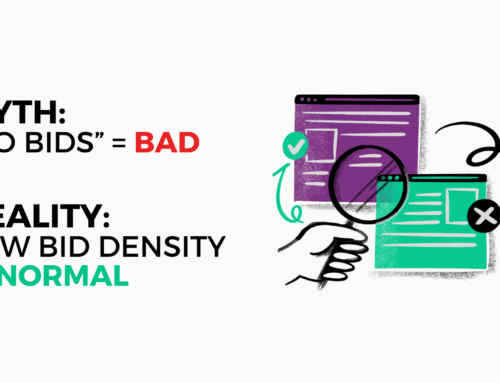Bits and Bobs from around the industry:
As The Open Web Wobbles, Index Exchange Is Betting On Curated Deals
Index Exchange is launching a new product called Index Marketplaces, aiming to leverage the curation capabilities of DSPs, DMPs, and RMNs (Retail Media Networks) to activate demand for private marketplace (PMP) deals across its network of publishers. This product is designed to facilitate “frictionless” data matching and enable marketers to apply data to reach specific user subsets more efficiently. By using Index’s existing infrastructure, data matching tech vendors can avoid the cost and complexity of building numerous connections, benefiting from the company’s preexisting integrations. Index is not charging an additional upstream fee to the curator, differentiating its approach from other SSPs. The product is currently in closed beta, with plans for gradual expansion based on operational considerations and demand. Index sees this as a strategic move in the evolving programmatic landscape, emphasizing curated audiences on the open web over a broad approach.
Some publishers are starting to see revenue lift from alternative IDs
Publishers are actively exploring alternative identifiers to replace third-party cookies, and some are sharing their initial findings regarding the revenue impact of these solutions. For example, in a test of Unified ID 2.0 by Salon, Snopes, and TV Tropes, a 200% increase in CPMs was observed compared to ads served to an authenticated audience with third-party cookies. Unwind Media, the owner of online gaming sites Solitaired and Solitaire Bliss, has experimented with first-party deterministic IDs, such as LiveRamp’s RampID, UID 2.0, Yahoo’s ConnectedID, and ID5, noting a 40-50% CPM increase when a deterministic ID is present in the bidstream.
However, the industry is still in the early stages of evaluating and testing various alternative identifiers, and publishers are exploring different options. The Independent is keeping an eye on Anonymised.io, UID 2.0, and LiveRamp’s RampID, while Future is actively testing LiveRamp’s Authenticated Traffic Solutions, The Trade Desk’s European Unified ID (EUID), UID 2.0, and Google’s publisher-provided signals. Publishers are navigating a landscape where multiple alternative IDs coexist, and the challenge lies in selecting the identifiers that will best meet the evolving needs of the advertising ecosystem.
Zack Sullivan, CRO of Future, emphasized the importance of authenticated users and noted that solutions like LiveRamp and The Trade Desk have received significant engagement. While there have been noticeable revenue lifts from implementing these alternative IDs, publishers are cautious about making definitive decisions at this early stage. The focus is on understanding which IDs will gain broader industry adoption and deliver effective marketing outcomes. The industry consensus is that more extensive testing, scaling, and evaluation are needed to determine the most effective alternative identifiers in the evolving post-cookie landscape.
A New Year and a New Google: A Perspective on Privacy Sandbox
Jeff Green, CEO of The Trade Desk, reflects on the challenges and opportunities in the advertising industry amid significant changes, particularly with Google’s Privacy Sandbox and the deprecation of third-party cookies. He expresses disappointment in what he sees as a lack of innovation in Google’s approach, criticizing Privacy Sandbox for not being conducive to the open internet. Green highlights the chance for the industry to step in, innovate, and build a new identity fabric for the internet.
Despite his reservations about Google’s strategy, Green sees this as an opportunity for others to create new solutions, citing technologies like Unified ID 2.0 as potential accelerators of change. He emphasizes the need for publishers, advertisers, and consumers to adapt and innovate in the face of evolving challenges. Green predicts that by the end of the year, the adoption of these new technologies will have increased, providing more opportunities for stakeholders in the advertising ecosystem. Overall, he underscores the importance of taking action and innovating in response to the transformative shifts occurring in the advertising landscape in 2024.






